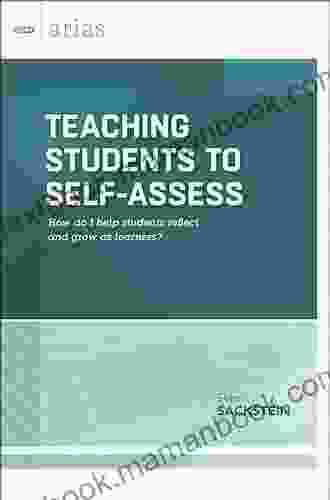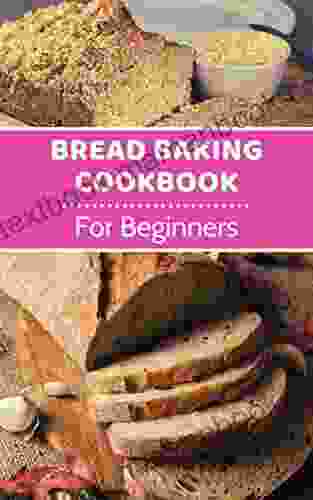Empowering Students through Self-Assessment: A Comprehensive Guide to Fostering Learning Autonomy

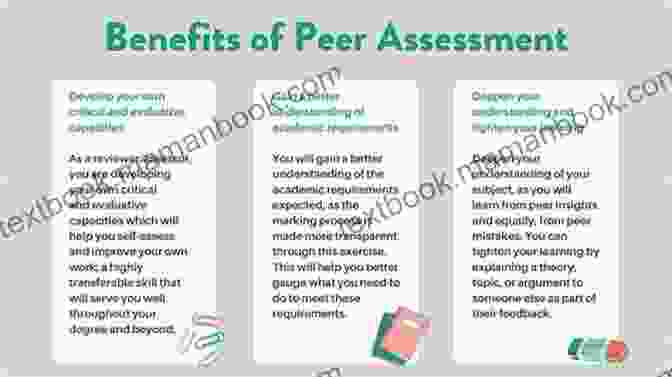
In an era defined by rapid technological advancements and the proliferation of information, equipping students with the ability to self-assess has become paramount. Self-assessment empowers learners to take ownership of their learning journey, develop metacognitive skills, and cultivate a lifelong love for knowledge. This comprehensive guide explores the multifaceted benefits, best practices, and challenges associated with teaching students to self-assess, providing educators with the tools they need to foster learning autonomy in their classrooms.
4.5 out of 5
| Language | : | English |
| File size | : | 439 KB |
| Text-to-Speech | : | Enabled |
| Enhanced typesetting | : | Enabled |
| Word Wise | : | Enabled |
| Print length | : | 60 pages |
| Screen Reader | : | Supported |
Benefits of Self-Assessment for Students
Engaging in self-assessment offers students a myriad of benefits that enhance their academic, personal, and professional growth:
- Increased Metacognition: Self-assessment prompts students to reflect on their strengths, weaknesses, and learning strategies, fostering a deeper understanding of their own thinking processes.
- Improved Academic Performance: By identifying areas for improvement and setting realistic goals, students can take proactive steps to enhance their academic outcomes.
- Enhanced Motivation: When students have a sense of agency over their learning, they become more invested in the process and develop a greater intrinsic motivation to learn.
- Cultivation of Independence: Self-assessment empowers students to become self-directed learners, capable of monitoring their own progress and making informed decisions about their education.
- Improved Problem-Solving Skills: Through self-assessment, students develop valuable problem-solving skills as they identify challenges and devise strategies to overcome them.
- Increased Self-Confidence: By acknowledging their achievements and recognizing areas for growth, self-assessment bolsters students' self-confidence and encourages a positive attitude towards learning.
- Enhanced Communication: Self-assessment encourages students to articulate their thoughts and reflections, developing their communication skills in both written and oral formats.
- Preparation for Higher Education and Careers: Self-assessment is a crucial skill for success in higher education and the workplace, as it enables individuals to evaluate their strengths, set goals, and adapt to changing circumstances.
Best Practices for Teaching Students to Self-Assess
To effectively teach students to self-assess, educators should consider the following best practices:
- Create a Positive and Supportive Learning Environment: Students need to feel comfortable taking risks and reflecting on their learning in a supportive environment.
- Introduce Self-Assessment Gradually: Start by guiding students through structured self-assessment activities before gradually increasing their independence.
- Provide Clear and Specific Criteria: Establish clear standards and expectations to guide students' self-assessments.
- Use a Variety of Self-Assessment Tools: Employ a range of techniques, such as self-reflection questionnaires, peer-assessment, and teacher feedback, to provide students with diverse perspectives on their performance.
- Encourage Feedback and Dialogue: Foster a culture of open communication where students feel comfortable seeking and providing constructive feedback.
- Model Self-Assessment: Demonstrate the process of self-assessment to students by reflecting on your own teaching and modeling metacognitive strategies.
- Incorporate Self-Assessment into Instruction: Integrate self-assessment into daily lessons and assignments, making it an integral part of the learning process.
- Provide Opportunities for Goal-Setting: Guide students in setting realistic goals based on their self-assessments, empowering them to take ownership of their learning.
Challenges of Teaching Self-Assessment
While self-assessment offers numerous benefits, educators may encounter certain challenges:
- Student Resistance: Some students may be reluctant to engage in self-assessment, fearing criticism or failure.
- Lack of Self-Awareness: Young students may struggle to accurately assess their strengths and weaknesses.
- Time Constraints: Implementing effective self-assessment practices can be time-consuming, especially in large classes.
- Cultural Influences: Cultural norms can impact students' perceptions of self-assessment and feedback.
- Bias and Subjectivity: Self-assessments can be influenced by personal biases and subjective interpretations.
Teaching students to self-assess is a transformative educational practice that empowers learners to drive their own learning. By fostering metacognition, enhancing motivation, and cultivating independence, self-assessment equips students with the skills they need to thrive in an ever-changing world. Educators play a crucial role in creating supportive learning environments, providing clear criteria, and encouraging feedback, ultimately enabling students to develop into self-directed, lifelong learners. Embracing the challenges associated with teaching self-assessment is essential for educators who are committed to fostering learning autonomy and empowering students to reach their full potential.
4.5 out of 5
| Language | : | English |
| File size | : | 439 KB |
| Text-to-Speech | : | Enabled |
| Enhanced typesetting | : | Enabled |
| Word Wise | : | Enabled |
| Print length | : | 60 pages |
| Screen Reader | : | Supported |
Do you want to contribute by writing guest posts on this blog?
Please contact us and send us a resume of previous articles that you have written.
 Top Book
Top Book Novel
Novel Fiction
Fiction Nonfiction
Nonfiction Literature
Literature Paperback
Paperback Hardcover
Hardcover E-book
E-book Audiobook
Audiobook Bestseller
Bestseller Classic
Classic Mystery
Mystery Thriller
Thriller Romance
Romance Fantasy
Fantasy Science Fiction
Science Fiction Biography
Biography Memoir
Memoir Autobiography
Autobiography Poetry
Poetry Drama
Drama Historical Fiction
Historical Fiction Self-help
Self-help Young Adult
Young Adult Childrens Books
Childrens Books Graphic Novel
Graphic Novel Anthology
Anthology Series
Series Encyclopedia
Encyclopedia Reference
Reference Guidebook
Guidebook Textbook
Textbook Workbook
Workbook Journal
Journal Diary
Diary Manuscript
Manuscript Folio
Folio Pulp Fiction
Pulp Fiction Short Stories
Short Stories Fairy Tales
Fairy Tales Fables
Fables Mythology
Mythology Philosophy
Philosophy Religion
Religion Spirituality
Spirituality Essays
Essays Critique
Critique Commentary
Commentary Glossary
Glossary Bibliography
Bibliography Index
Index Table of Contents
Table of Contents Preface
Preface Introduction
Introduction Foreword
Foreword Afterword
Afterword Appendices
Appendices Annotations
Annotations Footnotes
Footnotes Epilogue
Epilogue Prologue
Prologue Jd Field
Jd Field Gretchen Gimpel Peacock
Gretchen Gimpel Peacock Jean Boase Beier
Jean Boase Beier Andrew Sean Greer
Andrew Sean Greer Donna Fernstrom
Donna Fernstrom Jeri A Milstead
Jeri A Milstead Kindle Edition
Kindle Edition Roberto Calas
Roberto Calas Roman Kmenta
Roman Kmenta Elliot W Eisner
Elliot W Eisner Gavin Wick
Gavin Wick Jesse Graves
Jesse Graves Eric L Harry
Eric L Harry Susan Elia Macneal
Susan Elia Macneal Alexa Kang
Alexa Kang Sarah Silverman
Sarah Silverman Nicholas Meihuizen
Nicholas Meihuizen Marcia Talhelm Edson
Marcia Talhelm Edson Christie Watson
Christie Watson Sam Kean
Sam Kean
Light bulbAdvertise smarter! Our strategic ad space ensures maximum exposure. Reserve your spot today!
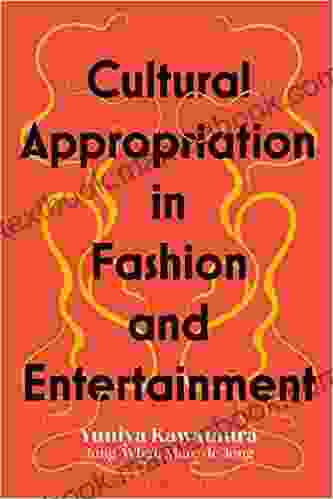
 Charlie ScottCultural Appropriation in Fashion and Entertainment: A Comprehensive Analysis
Charlie ScottCultural Appropriation in Fashion and Entertainment: A Comprehensive Analysis Adrien BlairFollow ·19.3k
Adrien BlairFollow ·19.3k Hugo CoxFollow ·11.1k
Hugo CoxFollow ·11.1k Fernando BellFollow ·10.1k
Fernando BellFollow ·10.1k Angelo WardFollow ·3k
Angelo WardFollow ·3k Terence NelsonFollow ·15.1k
Terence NelsonFollow ·15.1k Ray BlairFollow ·17.5k
Ray BlairFollow ·17.5k Lucas ReedFollow ·6.8k
Lucas ReedFollow ·6.8k Milton BellFollow ·3.4k
Milton BellFollow ·3.4k
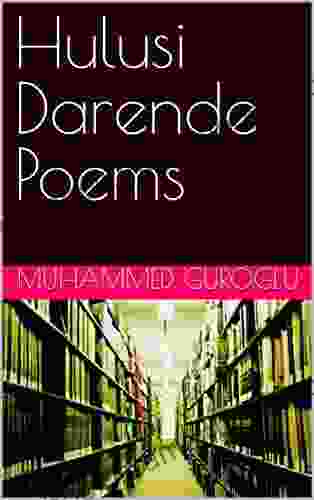
 Forrest Reed
Forrest ReedHulusi Darende's Poems: Unraveling the Lyrical Tapestry...
: A Journey into the Heart of Sufi...
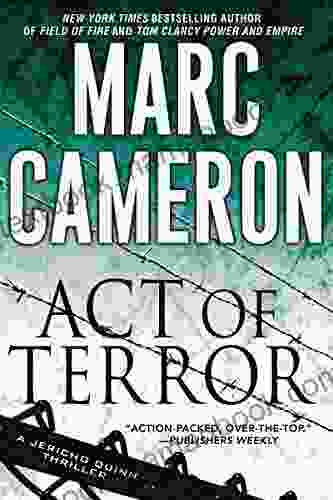
 Gabriel Blair
Gabriel BlairAct of Terror: A Jericho Quinn Thriller
In the heart-pounding...
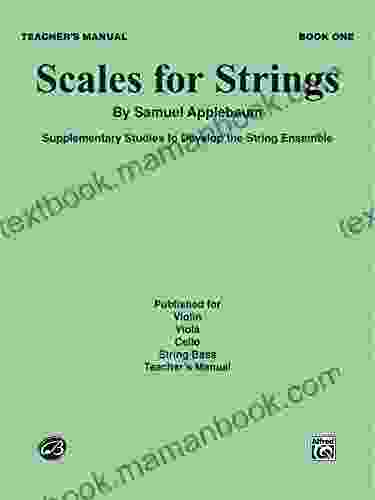
 Zadie Smith
Zadie SmithScales for Strings Teacher Manual: A Comprehensive Guide...
Scales are fundamental building blocks of...
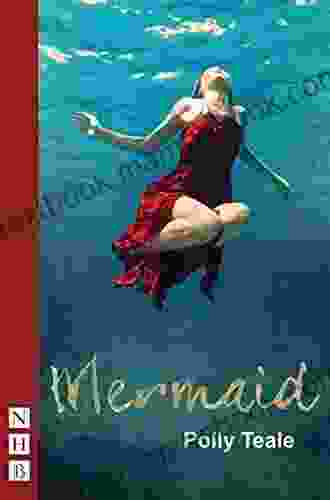
 Hugo Cox
Hugo CoxMermaid (NHB Modern Plays) Polly Teale
The Mermaid NHB Modern Plays series, a...
4.5 out of 5
| Language | : | English |
| File size | : | 439 KB |
| Text-to-Speech | : | Enabled |
| Enhanced typesetting | : | Enabled |
| Word Wise | : | Enabled |
| Print length | : | 60 pages |
| Screen Reader | : | Supported |


